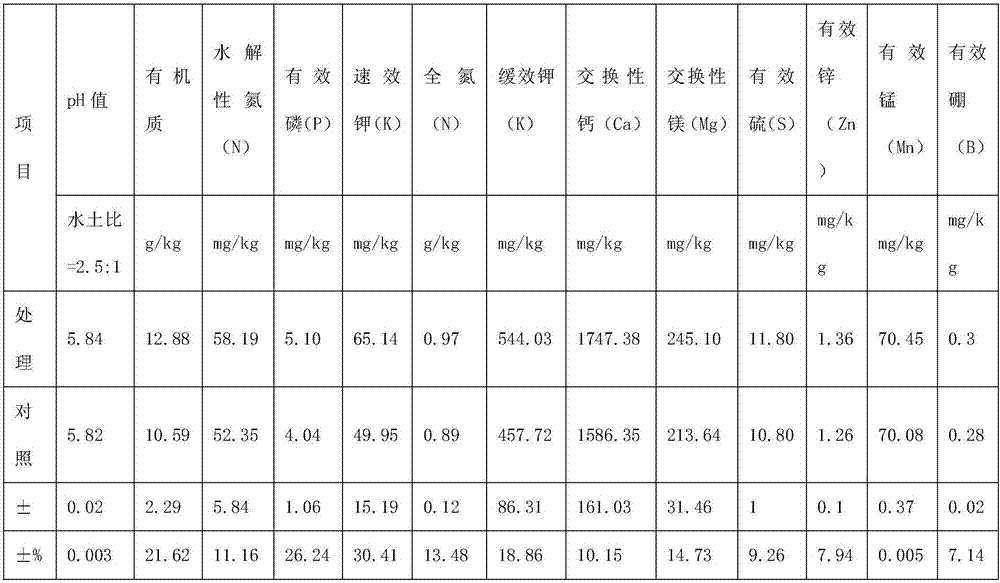Method for cultivating fruit trees by means of laying bricks and gathering soil on slope lands
A technology for laying bricks and fruit trees, which is applied to the field of cultivating fruit trees by laying bricks on sloping ground and accumulating soil, can solve the problems of unfavorable soil aggregation, sloping soil, loss of water and nutrients, thickening of soil layers and limited effect of increasing yield, etc. Enhance the ability to retain water and fertilizer, and achieve significant ecological benefits
- Summary
- Abstract
- Description
- Claims
- Application Information
AI Technical Summary
Problems solved by technology
Method used
Image
Examples
Embodiment 1
[0019] Embodiment 1: a kind of method of building bricks and accumulating soil to cultivate fruit trees on a sloping field, it may further comprise the steps:
[0020] S1. Set-out fixed point: Determine the position of bricklaying excavation according to the planting density of pear trees. The specifications are row spacing 3m, plant spacing 2m, and 111 trees are planted per mu;
[0021] S2. Excavation foundation: Excavate the slope within a fixed point, excavate the soil topsoil, core soil and subsoil within the fixed point and place them separately, use tools to excavate the bricklaying foundation within the fixed point of the excavated slope, The size of the foundation is: the length and width are both 1.5m, the width of the foundation trench is 0.2m, and the foundation trench is as deep as the rock surface;
[0022] S3. Bricklaying pit: sand bricks and mortar are used to lay bricks in the foundation trench. The length and width are 1.4m, the height is 0.6m, and the side wa...
Embodiment 2
[0026] Embodiment 2: a method for cultivating fruit trees by laying bricks and accumulating soil on slopes, it may further comprise the steps:
[0027] S1. Set-out fixed point: Determine the position of bricklaying excavation according to the planting density of apple trees. The specifications are set-out fixed-point with a row spacing of 3m and a plant spacing of 2.5m, and 89 plants are planted per mu;
[0028] S2. Excavation foundation: Excavate the slope within a fixed point, excavate the soil topsoil, core soil and subsoil within the fixed point and place them separately, use tools to excavate the bricklaying foundation within the fixed point of the excavated slope, The dimensions of the foundation are: the length and width are both 2m, the width of the foundation groove is 0.2m, and the foundation groove is as deep as the surface of the rock formation; the mortar is a mixture of river sand and cement, wherein the weight ratio of the river sand to cement is 2 :1;
[0029]...
Embodiment 3
[0033] Embodiment 3: a kind of method for building bricks and accumulating soil to cultivate fruit trees on a sloping field, it may further comprise the steps:
[0034] S1. Set-out fixed point: Determine the position of bricklaying excavation according to the planting density of Suijiang half-side red plums. The specifications are set-out fixed-point with a row spacing of 3.5m and a plant spacing of 2.5m, and 76 trees are planted per mu;
[0035] S2. Excavation foundation: Excavate the slope within a fixed point, excavate the soil topsoil, core soil and subsoil within the fixed point and place them separately, use tools to excavate the bricklaying foundation within the fixed point of the excavated slope, The size of the foundation is: the length and width are 1.6m, the foundation groove is 0.2m wide, and the foundation groove is deep to the rock surface; the mortar is a mixture of river sand and cement, wherein the weight ratio of the river sand and cement is 2:1;
[0036] S3...
PUM
 Login to View More
Login to View More Abstract
Description
Claims
Application Information
 Login to View More
Login to View More - R&D
- Intellectual Property
- Life Sciences
- Materials
- Tech Scout
- Unparalleled Data Quality
- Higher Quality Content
- 60% Fewer Hallucinations
Browse by: Latest US Patents, China's latest patents, Technical Efficacy Thesaurus, Application Domain, Technology Topic, Popular Technical Reports.
© 2025 PatSnap. All rights reserved.Legal|Privacy policy|Modern Slavery Act Transparency Statement|Sitemap|About US| Contact US: help@patsnap.com


